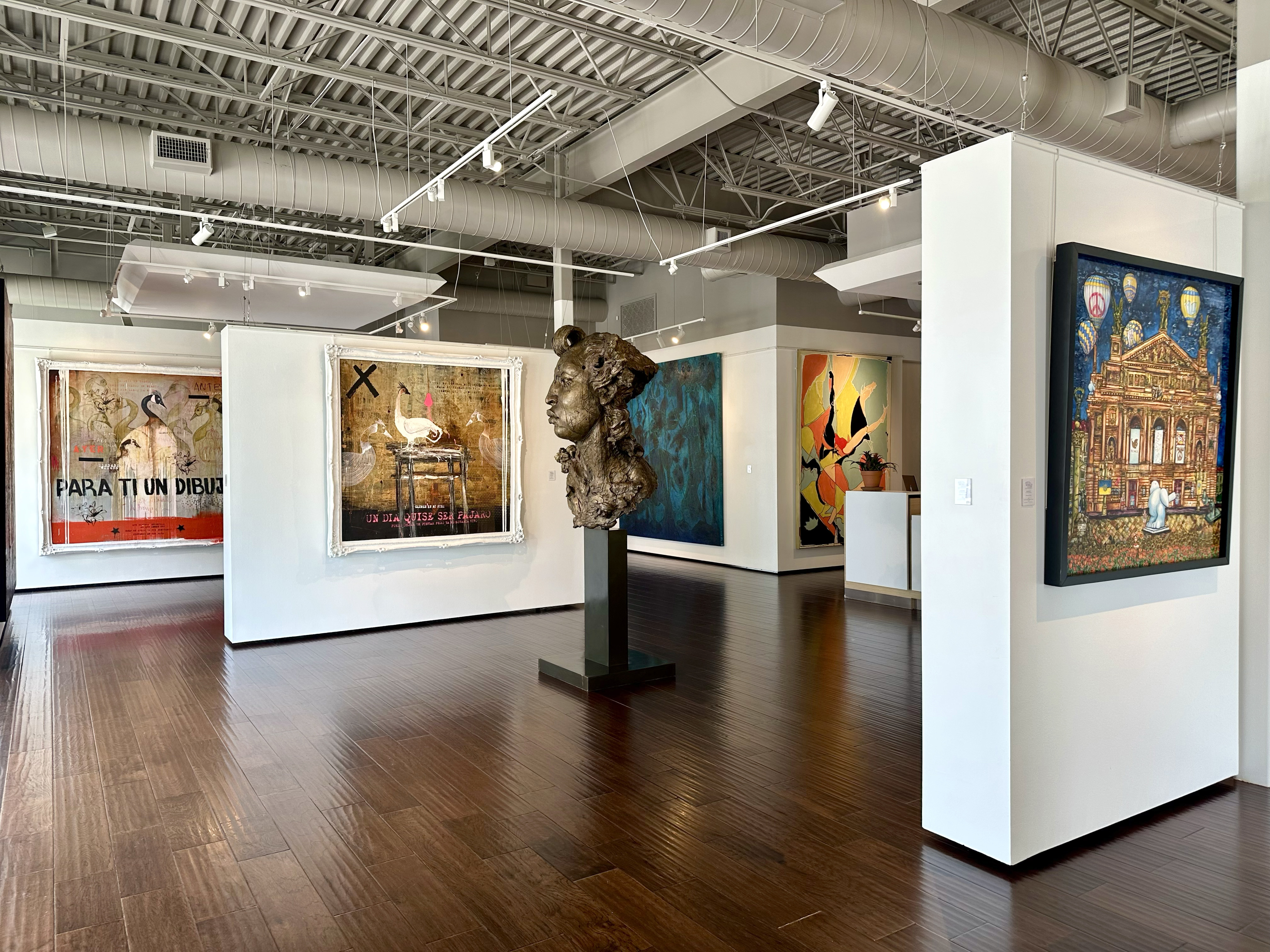아이 웨이웨이: 인간미래
| [CULTURAL ISSUE] National Museum of Modern and Contemporary Art, Korea
2021. 12. 11 – 2022. 4. 17
아이 웨이웨이

국립현대미술관(MMCA, 관장 윤범모)은 세계적인 미술가이자 영화감독, 건축가, 행동가인 아이 웨이웨이의 개인전 《아이 웨이웨이: 인간미래》를 12월 11일(토)부터 2022년 4월 17일(일)까지 국립현대미술관 서울에서 개최한다.
《아이 웨이웨이: 인간미래》는 표현의 자유와 난민의 삶을 주제로 다양한 작품을 발표해온 아이 웨이웨이(Ai Weiwei, 1957~)의 국내 미술관 첫 개인전이다. 아이 웨이웨이는 회화와 사진, 영상, 건축, 공공미술, 도자, 출판 등 다양한 장르에서 활동해왔다. 특히 일찍부터 블로그, 트위터, 유튜브 등 온라인 미디어를 적극적으로 활용하여 소통해 왔다는 점에서 디지털 시대 선구적인 예술가로 평가받는다.
전시명 ‘인간미래’는 아이 웨이웨이 예술세계의 화두인 ‘인간’과 그의 예술활동의 지향점인 ‘현재보다 나은 미래’를 결합시킨 것이다. 인권을 다룬 인류사의 중요 발언들을 모은 작가의 작품 <인용문>(2019)에는 소크라테스의 “나는 아테네인도 아니요, 그리스인도 아니다. 나는 세계의 시민이다.”라는 말이 포함돼 있다. 소크라테스처럼 아이 웨이웨이는 세계 시민의 일원으로서 책임감과 휴머니즘(인간다움)에 대해 고민해왔다. 작가는 예술적 실천을 통해 자유롭고 존엄한 인간으로서의 삶의 가치를 강조하며 미래세대가 그러한 삶을 누릴 수 있어야 함을 역설한다.

전시에는 동서고금을 넘나드는 아이 웨이웨이의 대표 사진 연작 <원근법 연구, 1995-2011>(2014)을 비롯해 베니스의 유리공예로 유명한 무라노 섬의 베렌고 공방과 협업하여 제작한 <유리를 이용한 원근법 연구>(2018), <검은 샹들리에>(2017-2021), 중국 도자기 생산지인 징더전(景德鎭)의 도자기로 제작된 <여의>(2012), <난민 모티프의 도자기 기둥>(2017) 등 그의 대표작이 총망라된다. 12m 크기의 대나무 구조물 <옥의>(2015), 로힝야족(미얀마에 거주하는 무국적의 인도-아리아인)에 대한 다큐멘터리 영상 <로힝야>(2021), <코카콜라 로고가 있는 신석기 시대 화병>(2015)까지, 관람객은 아이 웨이웨이의 작품 120여 점을 통해 작가가 걸어온 여정을 따라 걷게 된다.

먼저 미술관 마당에서는 높이 6m의 대형 설치 작품 <나무>(2015)가 관람객을 맞이한다. <나무>는 중국 남부 산악지대에서 수집한 은행나무, 녹나무, 삼나무 등 죽은 나무 가지와 뿌리, 그루터기 등을 조합한 것이다.
6전시실에서는 이번 전시에서 가장 웅장한 작품 중 하나인 <옥의>(2015)를 만날 수 있다. <옥의>는 중국 한나라 시대 황제의 무덤에서 발견된 ‘옥으로 된 갑옷(玉衣)’에서 유래한 작품으로, 대나무로 연을 만드는 중국 전통 기법으로 제작됐다. 아이 웨이웨이는 <옥의>를 비롯해 신석기 시대 토기, 옥, 징더전의 도자기 등 중국 역사와 찬란한 문화유산을 현대미술과 결합시킨 다채로운 작품을 선보인다.

7전시실에서는 난민과 인권 문제를 다룬 작가의 대표작 <빨래방>(2016)을 선보인다. 난민들의 옷과 신발 등 물품으로 구성된 이 작품은 작가가 그리스와 마케도니아 국경에 위치했던 이도메니 난민캠프에서 수집한 것이다. 2016년 5월 말, 그리스 정부는 이도메니 캠프를 비우고 거주 중인 난민들을 이동시켰다. 아이 웨이웨이는 캠프에 남겨진 물품을 모아 베를린 스튜디오로 운반하여 세탁, 수선하고 다림질한 뒤 목록을 만들었다. 신생아를 위한 옷부터 어린이용 드레스, 알록달록한 물방울 무늬 바지 등 유아부터 어른까지 모든 연령대의 옷들이 망라된 <빨래방>은 지금 여기, 부재한 사람들의 존재를 불편하게 환기시킨다.
미디어랩에서는 <대리석 헬멧>(2015), <대리석 포장용기>(2015)와 같이 대리석으로 제작된 작품과, 도자기로 만든 작품 <민물 게>(2011) 등을 볼 수 있다. <민물 게>는 2010년 상하이 시에서 작가의 상하이 스튜디오를 철거했을 때 작가가 인근 마을 주민들을 초대해 상하이 명물인 민물 게 요리를 대접하는 연회를 열었는데, 이를 기념한 작품이다. 작가는 민물 게(河蟹, he xie)의 발음이 중국 정부 슬로건인 ‘화해(和諧, he xie)’와 발음이 같다는 점에 착안하여 작품을 통해 국가 권력과 검열 상황을 풍자한다.
복도공간에서는 작가의 폭넓은 예술활동을 보여주는 아카이브 공간이 마련된다. 아카이브 공간은 ‘표현의 자유’, ‘예술과 행동주의’, ‘정부, 권력, 그리고 도덕적 선택’, ‘디지털 세상’, ‘역사, 역사적 순간, 미래’, ‘개인적 사유’ 등 여섯 개 주제로 구성된다. 이 주제어들은 작가 래리 와르시(Larry Warsh)가 아이 웨이웨이의 각종 온‧오프라인 공간에서 한 발언을 선별해 엮은 책 『아이 웨이웨이-주의』(Weiwei-ism, Princeton University Press, 2012)에서 발췌했다. 작품과 관련된 사진 및 영상 자료, 아이 웨이웨이의 신간도서 『천년의 기쁨과 슬픔』(1000 Years of Joys and Sorrows, Crown, 2021)을 포함한 관련 도서 30여 권 등이 소개되어 관람객이 자유롭게 자료를 찾아볼 수 있도록 준비했다.
2022년 초에는 작가가 온라인으로 참여하는 아티스트 토크가 진행될 예정이다. 한편 12월 10일(금) 세계인권의 날을 맞아 영국의 디지털예술 및 문화플랫폼 서카(CIRCA) 주관으로 서울 코엑스 케이팝 스퀘어에서 아이 웨이웨이의 영화가 20시 21분에 15분간 특별 상영될 예정이다.
윤범모 국립현대미술관장은 “《아이 웨이웨이: 인간미래》는 예술의 사회적 책임과 역할을 미학적 성취와 함께 이뤄낸 거장의 작품세계를 한 자리에 선보이는 전시”라며, “작가가 제안하는 인간의 존엄성과 세계시민으로서의 삶의 가치를 성찰해보는 기회가 될 것으로 기대한다”고 말했다.
국립현대미술관 서울
서울시 종로구 소격동 삼청로 30
02 3701 9674











